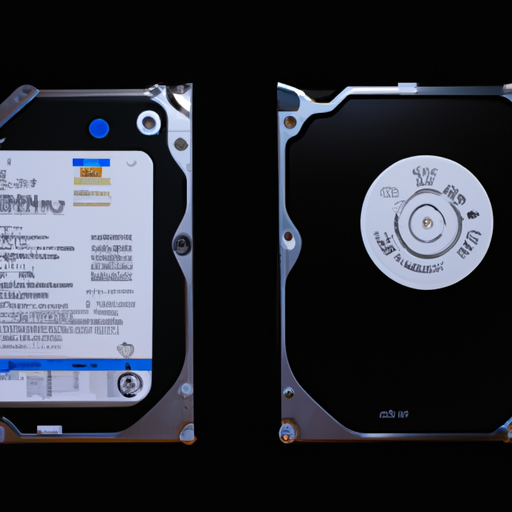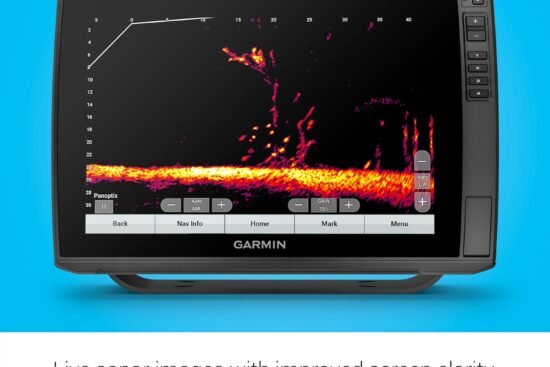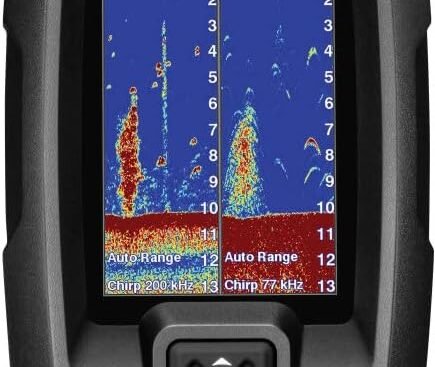
Are you confused about the difference between SSDs and HDDs and wondering which one is better for your needs? In a world where technology is constantly evolving, it’s important to understand the key distinctions between these two types of storage devices. Solid State Drives (SSDs) and Hard Disk Drives (HDDs) have their own unique advantages and disadvantages, and knowing which one suits you best can make a significant impact on your computing experience. In this article, we will break down the differences between SSDs and HDDs, giving you the insights you need to make an informed decision. So, let’s dive in and unravel the mysteries behind these essential components of your digital life.
Technology Overview
How SSDs work
Solid State Drives (SSDs) are a type of storage device that use flash memory to store data. Unlike Hard Disk Drives (HDDs), which use spinning disks and magnetic heads to read and write data, SSDs have no moving parts. Instead, data is stored on NAND flash memory chips, which retain information even without power.
When you save a file on an SSD, the data gets stored in the form of electric charges within the flash memory cells. To read the data, the SSD controller sends an electric charge through specific cells, and measures the resulting electrical current. Based on these readings, the controller can retrieve the stored information.
How HDDs work
Hard Disk Drives (HDDs) work by using spinning disks, known as platters, coated in a magnetic material. A read/write head with a tiny electromagnet then moves above the platters to read and write data. When data is stored on an HDD, the magnetic field of the platters aligns the magnetic particles in patterns that represent the stored information.
To read data from an HDD, the read/write head is positioned over the appropriate track on the platter, and the magnetism of the particles is detected by the head. When writing data, the head applies a magnetic field that aligns the particles according to the desired information.
Performance
Data transfer speeds
When it comes to data transfer speeds, SSDs hold a significant advantage over HDDs. SSDs can read and write data at much faster rates, thanks to the lack of moving parts. On average, SSDs can achieve data transfer speeds of several hundred megabytes per second (MB/s), often surpassing one gigabyte per second (GB/s) in high-end models.
HDDs, on the other hand, have limited speeds due to the physical limitations of the spinning disks. The maximum transfer speeds of HDDs typically range from 100 MB/s to 200 MB/s, depending on the drive’s specifications. This slower speed can lead to longer loading times and slower file transfers.
Random access times
Random access times refer to the time it takes for a storage device to locate and retrieve specific data. SSDs excel in this aspect, with an average random access time of less than 0.1 milliseconds (ms). This virtually instant access allows for quick application launches and rapid file retrieval.
HDDs, due to their mechanical nature, have higher random access times. The read/write head needs to physically move across the spinning disks to reach the desired data, resulting in access times in the range of several milliseconds. While this might not be noticeable for everyday tasks, it becomes more apparent in situations that require frequent access to multiple files.
Sequential read/write speeds
Sequential read/write speeds refer to the speed at which a storage device can transfer large, contiguous files. This is particularly important for tasks involving video editing, gaming, and large file transfers. Again, SSDs outshine HDDs in this aspect.
SSDs can achieve sequential read/write speeds exceeding 500 MB/s, with high-end models reaching well over 3 GB/s. In contrast, the sequential speeds of HDDs are generally limited to around 150 MB/s to 200 MB/s. This significant difference in performance can have a noticeable impact on tasks that involve large file operations.
Durability and Reliability
Vulnerability to physical damage
SSDs are more resistant to physical damage than HDDs. The lack of moving parts in an SSD makes it less susceptible to damage caused by drops, vibrations, or accidental impacts. The absence of spinning disks also eliminates the risk of mechanical failure due to sudden movements or physical shocks.
HDDs, however, are more vulnerable to physical damage. The delicate moving parts, including the spinning disks and the read/write head, can be easily affected by drops or strong vibrations. Even a minor shock can lead to permanent data loss or mechanical failure.
Resistance to shock and vibration
SSDs have a higher resistance to shock and vibration due to their solid-state design. This makes them a reliable option for portable devices and laptops that are frequently subjected to movement or transportation. They can withstand shocks and vibrations better than HDDs, minimizing the risk of data corruption or loss.
HDDs are more sensitive to shock and vibration due to their mechanical components. The spinning disks, read/write head, and other delicate parts can be easily disturbed, resulting in data errors or complete drive failure. Therefore, HDDs are generally considered less suitable for portable devices that are exposed to rough handling.
Lifespan and MTBF
SSDs typically have a longer lifespan compared to HDDs. Without any mechanical parts, SSDs are less prone to wear and tear, making them more durable in the long run. They can handle a large number of read and write operations without experiencing a decline in performance.
HDDs, on the other hand, have limited lifespans due to the mechanical nature of their operation. The spinning disks and moving read/write head undergo constant physical stress, which can lead to wear over time. Eventually, the mechanical components of an HDD are likely to fail, resulting in the loss of data and the need for a replacement.
Capacity
Storage capacity
When it comes to storage capacity, HDDs currently offer higher options compared to SSDs. HDDs can be found in sizes of up to 14 terabytes (TB), with 1 TB and 2 TB drives being common. This makes HDDs suitable for users who require vast amounts of storage space, such as video editors or data hoarders.
SSDs, on the other hand, have made significant advances in their storage capacities but still often come in smaller sizes. While consumer-grade SSDs typically range from 256 GB to 2 TB, high-end enterprise SSDs can go up to several terabytes. However, the cost per gigabyte of storage in SSDs is generally higher compared to HDDs, which can limit the affordability of higher-capacity options.
Cost per gigabyte
HDDs are considerably more affordable in terms of cost per gigabyte. Due to their long-standing presence in the market and mature manufacturing processes, HDDs offer a cost-effective solution for users who need large storage capacities on a budget. The price per gigabyte of an HDD is typically much lower compared to an SSD.
SSDs, although more expensive, have seen a continuous decrease in price over the years. The cost per gigabyte of an SSD has become more reasonable and competitive. However, when considering higher-capacity options, SSDs still come with a higher price tag compared to HDDs. The trade-off between price and performance must be considered when making a decision.
Power Consumption
Energy efficiency
SSDs are more energy-efficient compared to HDDs. The lack of mechanical parts and the use of advanced NAND flash technology result in lower power consumption. This makes SSDs a preferable choice for laptops, tablets, and other battery-powered devices, as they can extend battery life and provide better overall energy efficiency.
HDDs consume more power as they require electricity to spin the disks and move the read/write head. The mechanisms involved in the operation of HDDs require a constant power supply, leading to higher energy consumption. While this might not be a significant concern for desktop computers or devices with a dedicated power source, it can impact the battery life of portable devices.
Idle power usage
SSDs have the advantage of consuming less power during idle periods. When not in use, the power consumption of an SSD drops significantly, as it does not need to keep any moving parts active. This idle power usage contributes to energy savings and lower heat generation, resulting in a more efficient and cooler operating environment.
HDDs, on the other hand, still consume a notable amount of power even when idle. The spinning disks and other mechanical components require constant power to maintain their operational state. This steady power consumption contributes to higher overall energy usage and heat generation, which can impact the system’s performance and lifespan.
Noise and Heat
Noise emissions
SSDs are silent in operation since they lack any moving parts. The absence of spinning disks and moving read/write heads eliminates the mechanical noise typically associated with HDDs. Users seeking a quiet computing environment or those working in noise-sensitive environments will appreciate the near-silent operation of SSDs.
HDDs, on the other hand, produce audible noise during their normal operation. The spinning disks and read/write head movements can generate noticeable noise, especially when performing intensive data operations. While the noise level varies among different models and manufacturers, HDDs are generally noisier compared to the silent operation of SSDs.
Heat dissipation
SSDs generate less heat compared to HDDs. As SSDs have no moving parts, they produce minimal heat during operation. This contributes to a cooler operating environment, reducing the risk of overheating and improving overall system stability. The lower heat generation also reduces the need for aggressive cooling solutions.
HDDs, on the other hand, produce more heat due to the mechanical movements involved in their operation. The spinning disks and the read/write head generate friction, leading to heat buildup. This excess heat production often requires additional cooling measures to maintain optimal operating temperatures.
Portability and Form Factor
Physical size
SSDs are generally smaller and more compact compared to HDDs. The lack of moving parts allows SSD manufacturers to design drives with smaller form factors, making them ideal for devices with limited space, such as ultrabooks, compact desktops, and small form factor PCs. The small size of SSDs also enables greater flexibility in terms of mounting options.
HDDs, due to their physical design and rotating platters, are larger and bulkier compared to SSDs. They typically come in 2.5-inch or 3.5-inch form factors, making them more suitable for traditional desktop computers or larger laptops. The larger size of HDDs can limit their compatibility with certain devices and setups.
Weight
SSDs are significantly lighter than HDDs due to their lack of mechanical parts. The absence of spinning disks and read/write heads contributes to a much lighter overall weight, making SSDs ideal for portable devices or situations where weight is a crucial factor. Lighter storage options in devices like laptops or ultrabooks can improve portability and user convenience.
HDDs, on the other hand, are heavier due to the inclusion of mechanical components. The spinning disks and read/write heads contribute to a noticeable weight increase, making HDDs less suitable for ultra-portable devices that prioritize weight reduction. However, in certain scenarios where weight is not a concern, the weight difference between the two storage options might be negligible.
Compatibility
Both SSDs and HDDs have wide compatibility with various systems, but there are certain considerations to keep in mind.
SSDs can be connected to systems using either SATA (Serial ATA) or NVMe (Non-Volatile Memory Express) interface. SATA SSDs are compatible with most computers and laptops that have a standard SATA port, while NVMe SSDs require compatible motherboards with an available M.2 slot. It’s important to ensure compatibility before purchasing a specific SSD model.
HDDs, with their long history in the market, are compatible with a broad range of systems. They typically use the SATA interface, making them compatible with most desktop computers and laptops. However, larger HDDs with a 3.5-inch form factor might require a desktop computer case or an external docking station that supports the larger size.
Compatibility
Connectivity options
SSDs and HDDs offer various connectivity options, depending on the interface they support.
For SSDs, the most common connectivity option is SATA (Serial ATA). SATA SSDs can be connected to computers and laptops using a standard SATA cable, making them compatible with a wide range of systems. Another connectivity option for SSDs is NVMe (Non-Volatile Memory Express), which provides faster data transfer speeds compared to SATA. NVMe SSDs require compatible motherboards with an M.2 slot for connection.
HDDs primarily use the SATA interface for connectivity. This makes them compatible with most desktop computers, laptops, and external enclosures that support SATA connections. Certain external HDDs also offer USB connectivity, allowing them to be easily connected to a wide variety of devices such as laptops, gaming consoles, and media players.
Operating system support
Both SSDs and HDDs are compatible with popular operating systems such as Windows, macOS, and Linux. They can be used as primary storage drives or secondary storage options, depending on the system requirements and user preferences. The operating system interacts with the storage device through the appropriate drivers and file systems.
It’s crucial to note that some operating systems might have specific requirements or limitations when it comes to utilizing the full potential of SSDs or HDDs. For example, certain features like Trim support, which helps maintain long-term SSD performance, might require specific settings or software support from the operating system. It’s advisable to check the compatibility and any specific recommendations provided by the operating system manufacturer.
Price
Comparison of prices
When it comes to the price comparison between SSDs and HDDs, it’s essential to consider the storage capacity and performance benefits offered by each technology.
HDDs generally have a significant advantage in terms of affordability. Due to their long-standing presence in the market and mature manufacturing processes, HDDs offer a cost-effective solution for users who require large storage capacities at a reasonable price. The cost per gigabyte of storage in HDDs is typically much lower compared to SSDs.
SSDs, although initially more expensive, have seen a continuous decrease in price over the years. The cost per gigabyte of an SSD has become more reasonable and competitive. While SSDs are generally pricier compared to HDDs, the difference in cost has significantly narrowed, especially for lower-capacity options. The higher cost of SSDs is mainly attributed to their advanced technology and superior performance characteristics.
Cost per gigabyte
The cost per gigabyte is an essential factor to consider when evaluating storage options.
HDDs have a clear advantage in terms of cost per gigabyte. Due to their affordable manufacturing processes and widespread availability, HDDs offer a much lower cost per gigabyte compared to SSDs. This makes them an appealing choice for users who prioritize vast storage capacities at an economical price.
SSDs, on the other hand, still come with a higher cost per gigabyte compared to HDDs. The advanced technology involved in SSDs, including NAND flash memory chips, controllers, and firmware, contributes to their higher manufacturing costs. However, the cost per gigabyte of SSDs has significantly decreased over the years, making them a more accessible option, especially for users who value performance and faster data access.
Summary and Conclusion
Choosing between SSDs and HDDs depends on your specific needs and priorities. To summarize the key points:
- SSDs offer faster data transfer speeds, lower random access times, and superior sequential read/write speeds compared to HDDs.
- HDDs offer larger storage capacities at a more affordable cost per gigabyte.
- SSDs are more durable, resistant to physical damage, and have a longer lifespan.
- HDDs are more susceptible to physical damage, shock, and vibration due to their mechanical parts.
- SSDs consume less power, generate less heat, and operate silently.
- HDDs have broader compatibility in terms of connectivity options and operating system support.
- SSDs are smaller, lighter, and more suitable for portable devices with limited space.
- HDDs are more compatible with larger desktop computers requiring higher storage capacities.
- The cost per gigabyte of HDDs is significantly lower compared to SSDs, making them more budget-friendly for larger capacities.
Identifying the right storage solution for your needs ultimately depends on factors such as performance requirements, storage capacity demands, budget constraints, and portability preferences. If you prioritize speed, durability, energy efficiency, and faster data access, an SSD might be the optimal choice. If affordability, larger storage capacities, and compatibility with a wider range of devices are your main concerns, an HDD might be the better fit.




